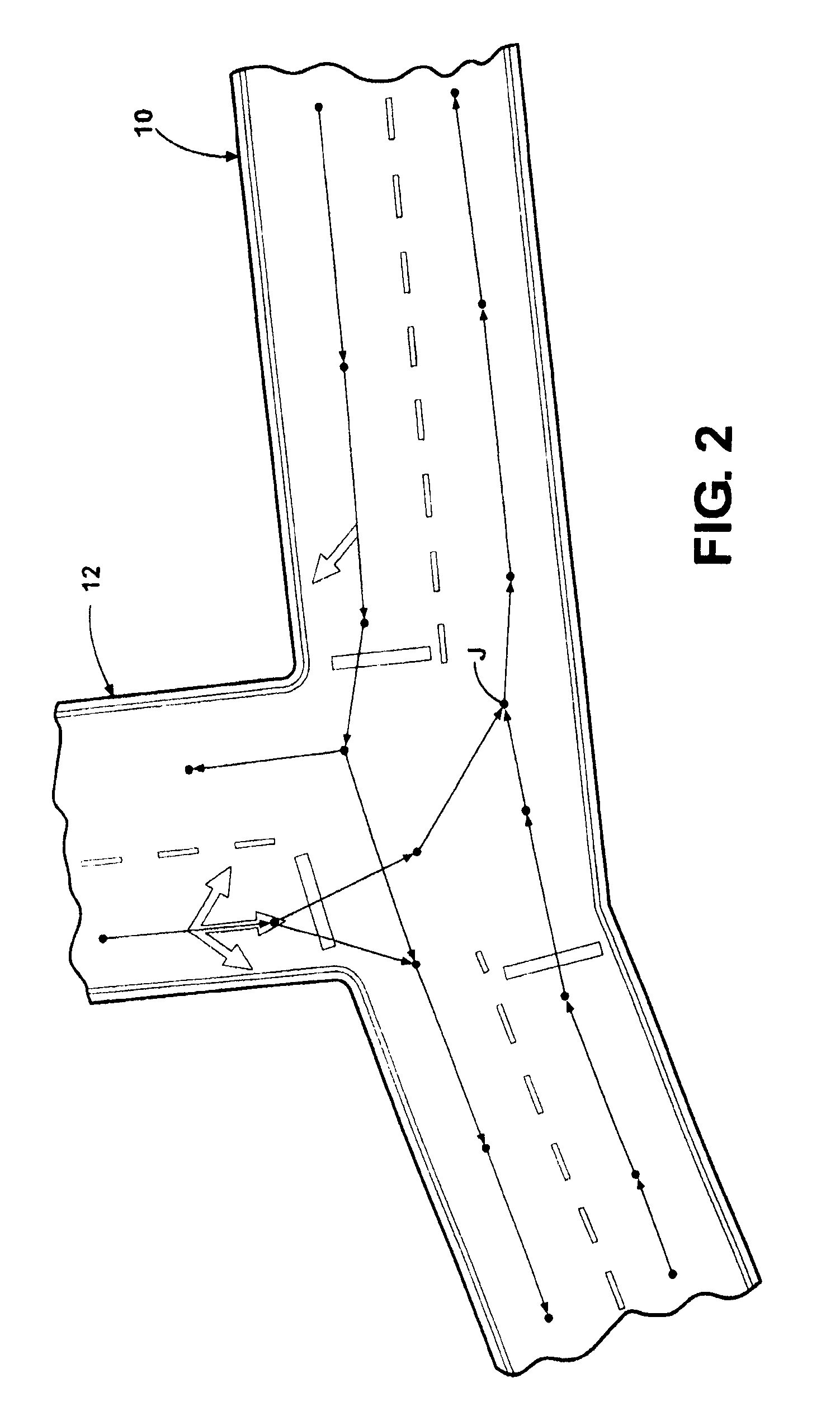Method of verifying or deriving attribute information of a digital transport network database using interpolation and probe traces
a technology of digital transport network and attribute information, applied in error detection/correction, navigation instruments, instruments, etc., can solve problems such as inaccuracy or systematic errors, inability to verify or derivate attribute information of digital transport network database, and high cost of digital map production and update, etc., to achieve good attribution
- Summary
- Abstract
- Description
- Claims
- Application Information
AI Technical Summary
Benefits of technology
Problems solved by technology
Method used
Image
Examples
Embodiment Construction
[0035]Referring to the Figures, wherein like numerals indicate like or corresponding parts throughout the several views, this invention pertains to digital transportation network navigation systems and to the digital maps, databases and devices used by navigation systems. By “digital transportation network”, it is meant to include digital mapping systems for various established transportation networks, including various roadway surfaces for motorized and non-motorized vehicles, walking, biking, skiing and hiking trails, and other established routes along which users of navigations devices travel for business or pleasure. For purposes of this invention, the term “roadway” is intended to be used in a most general way and to be inclusive of all paved and unpaved roads, paths, trails and the like for use by any type of vehicle or by a pedestrian.
[0036]This invention is applicable to correcting / updating databases of transportation networks involved with all kinds of digital navigation de...
PUM
 Login to View More
Login to View More Abstract
Description
Claims
Application Information
 Login to View More
Login to View More - R&D
- Intellectual Property
- Life Sciences
- Materials
- Tech Scout
- Unparalleled Data Quality
- Higher Quality Content
- 60% Fewer Hallucinations
Browse by: Latest US Patents, China's latest patents, Technical Efficacy Thesaurus, Application Domain, Technology Topic, Popular Technical Reports.
© 2025 PatSnap. All rights reserved.Legal|Privacy policy|Modern Slavery Act Transparency Statement|Sitemap|About US| Contact US: help@patsnap.com



